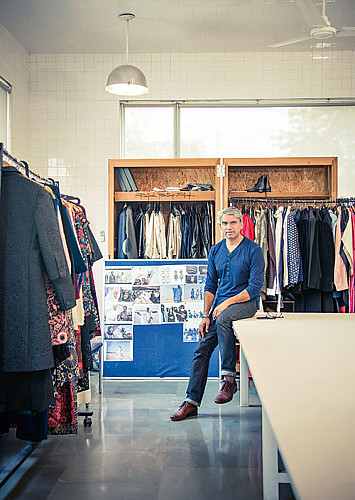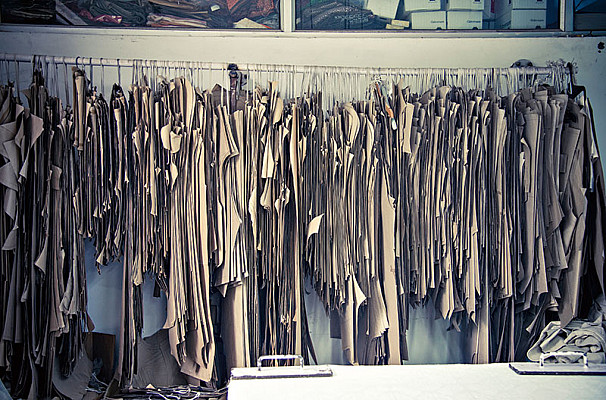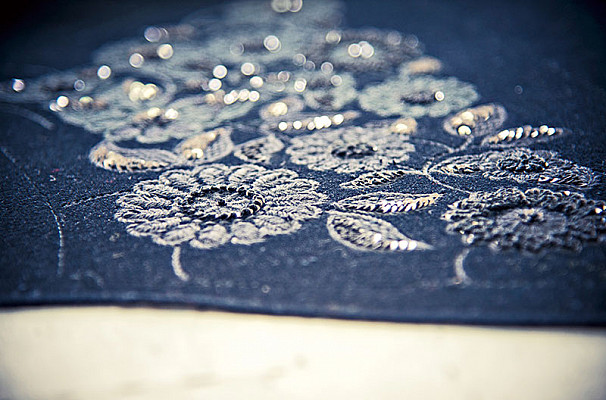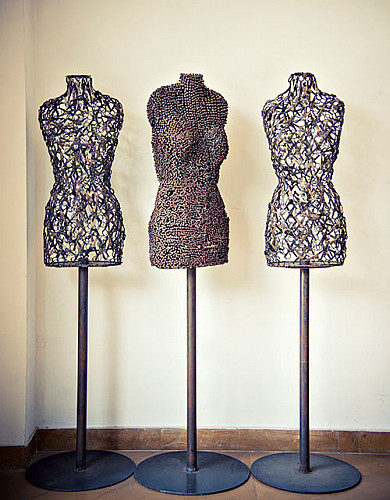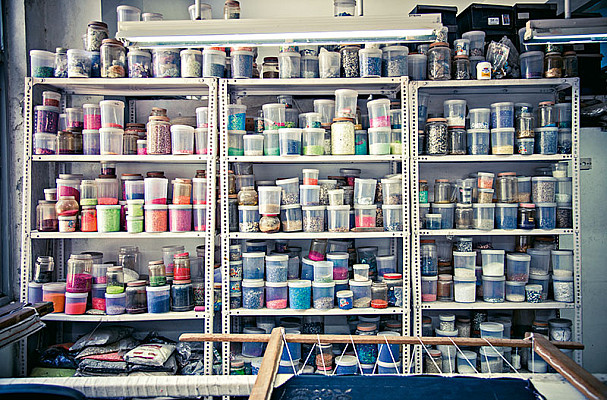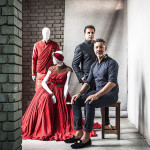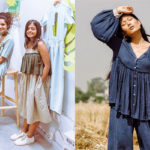Master Of The Modern: Rajesh Pratap Singh
For his Spring/Summer 2015 line, fashion designer Rajesh Pratap Singh won great applause — for mixing modern and traditional aesthetics and bringing a fresh take on androgyny to the table. As a result, the handwoven khadi collection created a huge impact on his runway with indigo-dyed selvedge denims. From the start, Singh has focussed on form and functionality instead of razzle-dazzle, and finds himself confined to that idea. Before he talks about his work, underlying challenges and the DNA of his eponymous label, Singh goes on to recall where his own journey began. “I started out in a suit-and-jacket factory as an assistant designer and a few years later, in 1996, we started the brand, initially making lines for export which were later extended to the home market.” Singh, who has been at the fashion frontier for over a decade now, strongly dislikes anything ornamental, or at times, the word ‘fashion’ itself, which in turn makes him the subject of everybody’s curiosity.
His design acumen reflects global aesthetics but the roots are drenched in traditional methodology. When asked to explain about the philosophy that empowers his work, he unapologetically denies the existence of one. “My mantra is not to stress about a design philosophy. Just pay heed to what comes naturally, and continuously refine the technique. We define something which is pure and improve it; we pick up a few techniques and keep working on them. The meanings of words such as ‘philosophy’ and ‘inspiration’ are distorted. Fashion designers are expected to have a new inspiration every three months and that belittles its meaning,” he intones. He may not be enthusiastic about an inspiration, but he does find his muse in friends — designer and style connoisseur Jivi Sethi and entrepreneur Anjali Gujral. He elaborates, “I think they are intelligent people and I know them personally which is very important for me. If I were to tell you that Marlon Brando is my muse, that would be vague, I didn’t even know the guy.”
The man, who achieves new milestones, and thrives to make a newer and better discovery with each collection, is all about practice and precision. He has worked under veteran designer David Abraham (of Abraham & Thakore) during his college years at Sri Ram College of Commerce (SRCC), followed by a period of intensive training at the Italian menswear label Marzotto, in Arezzo, Tuscany. While he learned a lot on the job, he credits his alma mater National Institute of Fashion Technology (NIFT) in Delhi for moulding the creative in him. “I think we had great teachers who taught us well, amazing batchmates and almost complete freedom to explore, learn and experience the craft.”
Born and raised in Rajasthan, in a family of doctors, Singh rests his early memories of fashion on collected experiences that have been obscured by time. “I have a strong case of fashion amnesia. However, I do have flashbacks on and off. Men in white walking in the sands of the Barmer district…the Mother Teresa sari border…J P John Singh of Anokhi on his motorcycle…David Abraham, sitting and working on colours for hours…textile guru Martand Singh talking about the virtues of indigenous textiles…designer Rakesh Thakore holding forth on ikat, in his immaculate Jean Paul Gaultier jacket….” Singh reminisces.
In 2008, he successfully showcased his Autumn/Winter ’08 and Spring/Summer ’09 collections in Paris, preceded by the designing of the opera costumes of Padmâvatî, written by the late Albert Roussel, directed by Sanjay Leela Bhansali, and staged at Théâtre du Châtelet in Paris. With a handsome amount of global recognition, including a permanent exhibit at the Victoria and Albert Museum in London, Singh considers his achievements “very subjective, and quite honestly at times very cumbersome to deal with”. However, making things keeps him interested in the trade, he says.
Being a recluse in a gregarious industry, Singh has received his share of jeers. Yet, he keeps his wits about him, in such matters. “Usually, it’s about how colour and zardozi are sorely missing from our lives, and how commercially successful we would be if we made ‘sensible’ clothes. We deal with it by complaining and sulking about our perpetual financial crisis. This is followed by a few rounds of drinks that facilitate a serious intellectual discussion,” says the unflappable designer.
He strongly believes that Bollywood is the strongest communicator of fashion, yet wants people to wear his clothes only for the quality and not the label. When asked about a celebrity that he would love to dress, he replies with a chuckle, “Vijay Sharma of Baroda and James Smith from Leeds. You know them, right?” He dissolves into laughter, making it clear that he doesn’t believe in dressing up celebrities, but the discerning common man.
His own values often contradict those of the fashion status quo, making him look like a rebel, but his sardonicism often supersedes his seriousness. Adventurous at heart and an enthusiastic traveller, Singh unwinds by climbing a mountain or trekking. “Travel is the most important and exciting part of what I do,” he admits.
His recent Autumn/Winter 2015 show, which was high on drama and design, was also a spectacle of the designer’s love for architecture and storytelling. “Architecture is the perfect form of fine art. If I had the brains, I would have become an architect. I look at a lot of architects’ works for reference. For our recent collection, the heel of the shoe was actually inspired by a building which the award-winning Iraqi-British architect Zaha Hadid had designed.”
The menswear specialist already knows what he is going to show in the coming seasons, although he won’t be drawn into a discussion other than to say that he will “showcase it when the time is right and not the season”. He explains that when a collection is ready and the team thinks it is the appropriate time, they present it. “For our recent line, we worked a lot with wool ikats, indigo-dyed wool, indigo wool ikat and leather. But these ideas have taken shape over the years. We don’t just jump from season to season,” he adds. After parading clean-cut collections for over a decade, when asked to share his thoughts about how he feels before a show starts, he says, “In the wise words of David Gilmour, ‘comfortably numb’ best describes our emotions before a show.”
His assertiveness to tread an offbeat path, refusal to kowtow to the industry’s conventions and an ingenious attempt to strengthen the organic has positioned him as one of the most virtuous designers in the country. The ethics and ideologies might shift shape every season, but there are design principles — such as his relentless efforts to redefine handwoven textiles — which he follows as if they are set in stone.
Related posts from Verve:
Verve Trending
Sorry. No data so far.
us on Facebook to stay updated with the latest trends

